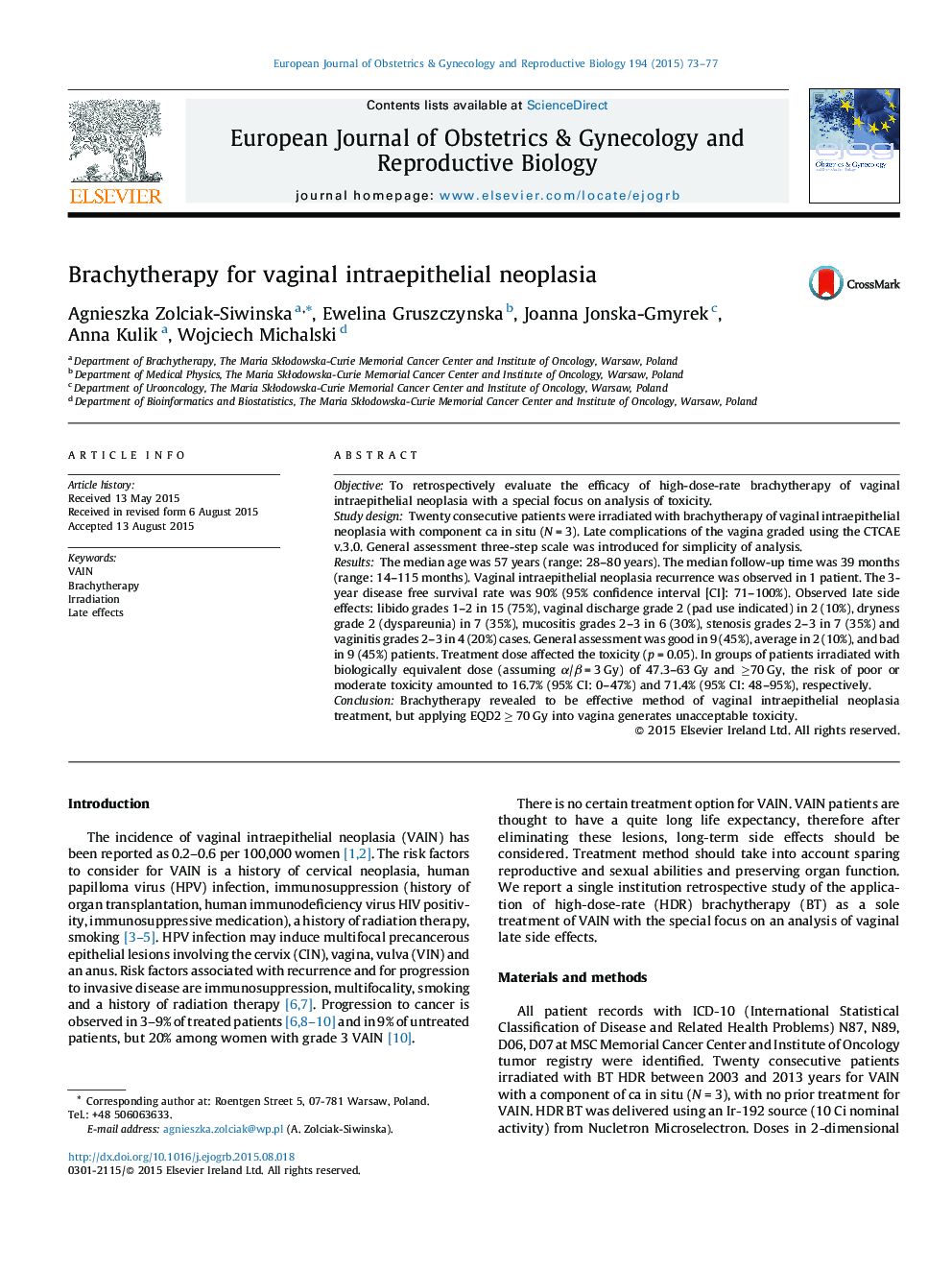| Article ID | Journal | Published Year | Pages | File Type |
|---|---|---|---|---|
| 6173080 | European Journal of Obstetrics & Gynecology and Reproductive Biology | 2015 | 5 Pages |
ObjectiveTo retrospectively evaluate the efficacy of high-dose-rate brachytherapy of vaginal intraepithelial neoplasia with a special focus on analysis of toxicity.Study designTwenty consecutive patients were irradiated with brachytherapy of vaginal intraepithelial neoplasia with component ca in situ (N = 3). Late complications of the vagina graded using the CTCAE v.3.0. General assessment three-step scale was introduced for simplicity of analysis.ResultsThe median age was 57 years (range: 28-80 years). The median follow-up time was 39 months (range: 14-115 months). Vaginal intraepithelial neoplasia recurrence was observed in 1 patient. The 3-year disease free survival rate was 90% (95% confidence interval [CI]: 71-100%). Observed late side effects: libido grades 1-2 in 15 (75%), vaginal discharge grade 2 (pad use indicated) in 2 (10%), dryness grade 2 (dyspareunia) in 7 (35%), mucositis grades 2-3 in 6 (30%), stenosis grades 2-3 in 7 (35%) and vaginitis grades 2-3 in 4 (20%) cases. General assessment was good in 9 (45%), average in 2 (10%), and bad in 9 (45%) patients. Treatment dose affected the toxicity (p = 0.05). In groups of patients irradiated with biologically equivalent dose (assuming α/β = 3 Gy) of 47.3-63 Gy and â¥70 Gy, the risk of poor or moderate toxicity amounted to 16.7% (95% CI: 0-47%) and 71.4% (95% CI: 48-95%), respectively.ConclusionBrachytherapy revealed to be effective method of vaginal intraepithelial neoplasia treatment, but applying EQD2 â¥Â 70 Gy into vagina generates unacceptable toxicity.
